
Ender Lilies: Quietus of the Knights Review
In Ender Lilies: Quietus of the Knights you play as Lily, a silver-haired girl adorned in a simple pale dress. You are awoken in a lifeless, ruined kingdom by a nameless, deathless knight.
"Do you remember what fate befell this land?" he asks.
Accompanied by a muted color palette and a mournful soundtrack, you take your first steps into this bleak, somber world.
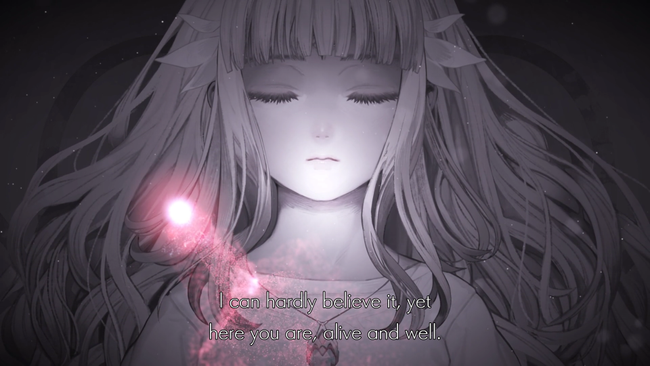
You soon learn that the collapsed kingdom you now traverse fell to a curse-like phenomenon known simply as The Blight. A toxic rain has come to the region, turning inhabitants into revenant malformations appropriately known as Blighted. Lily realizes she has the power to take the curse of the Blight from others and into herself, 'purifying' those who feel her touch so they can rest in peace. You take off to learn more about this kingdom, the Blighted, and yourself.
At its core, Ender Lilies is a sidescroller RPG with exploration elements commonly referred to as a 'Metroidvania', and the overall gameplay structure should sound pretty familiar if you have any experience with the genre at all. The game world is segmented into separate rooms connected by various pathways, with many secret items and lore to be found. While you are somewhat guided on a linear path in the game's opening hour, soon enough the map will open up and you'll be able to explore more freely in whichever direction you choose. However, many Blighted foes will stand in your path, some more menacing than others.
Lily herself cannot fight, so she relies on her awakener to fight for her. Known only as the Umbral Knight, this apparition works as your primary means of attack, swinging a large sword in a simple three-hit combo. However, as Lily purifies certain spirits she encounters, she can then summon them to use their abilities in combat as well. One such spirit swings a ball-and-chain in a circle, hitting any enemies around Lily. Another slings magic more like a ranged attack. Soon enough Lily will be able to call upon a multitude of various spirits, each with their own styles of attacks, in order to vanquish the Blighted in her path.
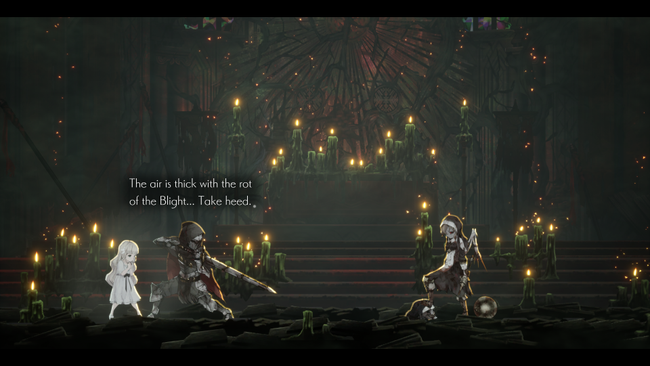
Ender Lilies' storyline is not told in a typical front-to-back expository fashion. Instead, you'll find various notes, journals, and other pieces of lore throughout the world, each cluing you in on the history of this land, the Blight, as well as an enigmatic figure known as The White Priestess. Other bits of information can be gleaned from the environment itself, or from the few words the Umbral Knight might utter here or there.
Each major boss you encounter in Ender Lilies was once a normal resident of the land - a priestess' guardian, a town warrior, a cleric ... ordinary people whose lives met with the wrong side of fate. Now in monstrous, grotesque forms, Lily needs to defeat these horrors in order to purify them and save them from their unfortunate selves. Each time you surpass one of these foes, Ender Lilies will award you with a stylized memory scene of their lives.
These visions - whose presentation can be described as stylized visual novel-esqe CGs - are tragic in nature but beautiful in presence. Happy endings are not often found in Ender Lilies, and comparisons to the Einherjar memoirs of Valkyrie Profile are fitting. These characters you learn about were not able to escape the ruination brought forth by the Blight, but each has a story to tell.
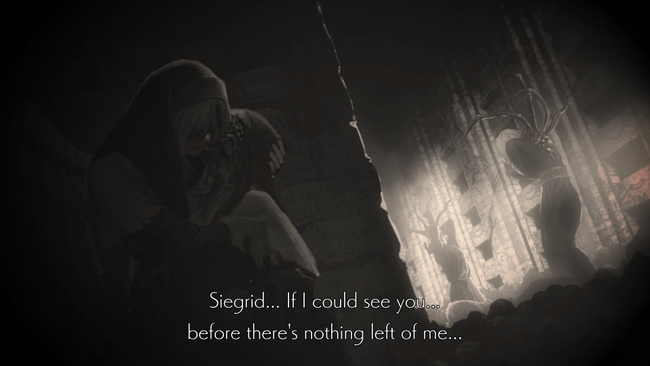
On paper, piecing together a narrative through disjointed bits of lore didn't immediately sound interesting, but I soon found myself fascinated by the world on display. Ender Lilies' writing is both compelling & poetic, and I was soon eagerly reading through each piece I could find, hoping the next wasn't far away. No description seemed overwrought and no anecdote was dull.
The quality of the English localization is surprisingly elegant in places, and I found it incredibly captivating. There's a certain efficiency in the writing ... dexterity in the penmanship that cemented my attention. Where some narratives sometimes dwell overlong in the exposition or description of events, Ender Lilies has a knack for stating just enough to be interesting but not too much to be tiresome.
The tone here may not be for everyone. Ender Lilies is not a high-energy, lively game. It is instead somber, melancholic. I wouldn't call it hopeless, though. There's a sort of wistful serenity in seeing snapshots of people's lives, the relationships they held, and the fates they met. Lily finds herself as the only source of hope, bubbling underneath this miasma of sorrow. Ender Lilies is certainly gloomy, but beautiful all the same.
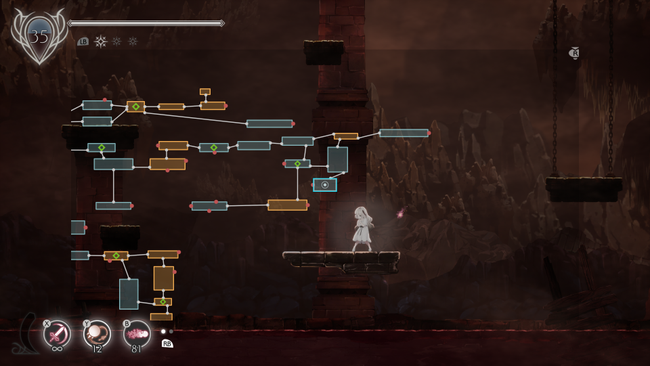
As a game, the exploration elements of Ender Lilies offer quite a few conveniences to the player. Every room on your map will be highlighted yellow if you've collected all of the items available in that room. Additionally, your map will tell you how many exits there are from any given room, even before you find them yourself. Both of these are conducive for the backtracking common in the genre when you gain new traversal abilities. While the map won't tell you *precisely* what you need to find a new path or pick up an item you couldn't before, simply knowing which rooms still have secrets to find and which rooms do not reduces the tedium sometimes found in other games in the genre.
Additionally, Ender Lilies is very generous when it comes to retries. If you happen to lose all your health as you explore or during a tough encounter, you'll simply respawn at the most recent checkpoint, maintaining all of the EXP and other items you've gained before you fell. So, there's really no penalty for taking a few tries on a boss encounter, exploring a bit out of your comfort zone, or trying out different combat abilities. Despite the oppressive atmosphere in places, Ender Lilies is a lenient game.
The one place that Ender Lilies falters most, at least relatively, is unfortunately in its combat. It's not broken or dysfunctional, it's just merely a serviceable piece in a game where nearly every other component is excellent. The Umbral Knight will stay as your primary attack throughout the game, eventually extending from the basic three-hit combo. You'll gain many other spirit abilities as you progress through the game, but I never felt it was ever necessary to switch things up, and I decided to just stick with a few key abilities. Controls are just a tad simple, borderline unhandy at times, but nothing too egregious.
Sometimes summoning multiple spirit abilities can get a bit claustrophobic as 3 or 4 different sprites populate the screen performing their attack animations while you are carefully trying to position yourself around enemy bosses or attacks. Again, the combat isn't outright poor, it works just well enough to support everything else Ender Lilies has to offer.
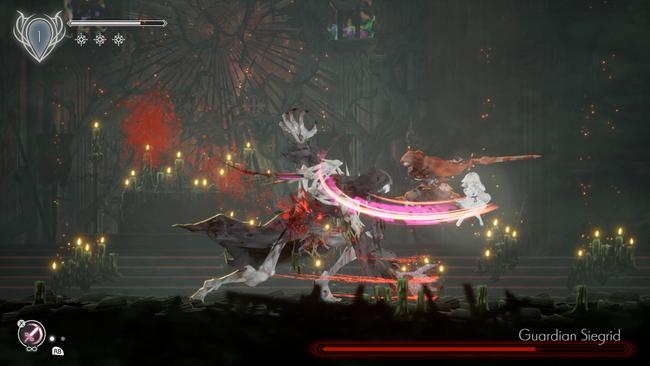
Ender Lilies never feels too punishing if you have some experience with similar types of games, but its last zone is easily the most stressful to play through. It's effectively a poisonous cavern full of gas that slowly depletes your health as you make your way through it, along with the game's most dangerous suite of enemies. It makes sense thematically and by design to have the game's last zone act as one final significant hurdle before the credits, so it didn't bother me too much, but it does act as a considerable bump in challenge relative to what comes before.
Outside of a few small imperfections in combat, I adored Ender Lilies, and it's one of my favorite games this year. Not many games exhibit either this type of tone, this style of artwork, or this structure of storytelling, and most everything superbly clicks together.
Ender Lilies is an emotional sidescroller RPG with a well-told compelling story, beautiful music & art, and solid gameplay. Its hauntingly beautiful style and satisfying world more than makes up for some slight combat blemishes, leaving a lasting impression as one of the most remarkable games of its kind.